We started in front of this large suspended cross, which despite the title of today's lecture Joaneath called "a great piece of medieval art." [As an aside, she noted that the curator who installed this piece in its present location is now the head of medieval art at the Metropolitan Museum in New York.] It hangs in the "entry,"if you will, to the early Renaissance because it provides a nice step to later Italian work. In a relatively short period of time in the 12 and 13th centuries, there was a major shift from art in the service of the church to art as an exploration of the ethical issues of daily life.
Imagine an Italian church in the 13th century, with small windows, a dark interior - this cross probably hung above the main altar, catching the available light in its gold trim. The image of the suffering Christ, developed in the 13th century to elicit sympathy and inspire devotion, is flanked by busts of the mourning Virgin and the Apostle John. The gold background to evoke the ethereal has disappeared as background, to reappear in the framing; the greenish tint of the dead body is a naturalistic detail not consistent with the art of the Middle Ages. The unknown artist of this work depicted the elegance and emotive qualities of the crucified Christ in a manner clearly influenced by the Florentine painter Cimabue (ca. 1240-ca. 1302), recognized as one of the great Italian masters of the 13th century.
 |
| Cimabue, Crucifix, Basilica of S. Croce, Florence |
Cimabue was one of the first to break from the Italo-Byzantine style so popular in Italy in the 13th Century. Italian art of the 1200's was heavily influenced by the Byzantine artists who appeared around this time in Italian courts. In 1204, with the fall of Constantinople to the Turks, Byzantine artists began to migrate to Italy. For a time, Italian art was of the Italo-Byzantine style, also called maniera greca. Art of this time is characterized by frontal poses, prominent halos, and a lack of modeling. It was also common to paint small active scenes along the edges of the main painting.
This triptych is an example of some of these concepts. Folding triptychs like this were used for private devotion, but the shape mimics the structure of a church. The small portable painting with the glorious gold frame is reminiscent of a reliquary. The enthroned Madonna and Child are flanked by (left to right) Sts. Nicholas, Bartholomew, Catherine of Alexandria, Anthony Abbot, Francis, and Lucy. This composition uses the metaphor of a queen surrounded by her courtiers to depict the Virgin in her role as the Queen of Heaven. Several active scenes are painted above the main pieces. The painter simulated the gold embroidered cloth of the Virgin's throne by scratching away the white paint to reveal the underlying gold leaf, which has been pricked to enhance its reflectivity.
Italian artists in the late middle ages developed the small scenes on the edges of the work into a predella, usually a story sequence that tells more about the main action in the larger piece. As time progressed, artists and patrons had an increasing desire to have more story, which is consistent with the rising interest in the opinions and ideas of the viewer. More story helps the viewer to relate the art to his own experience.
There is also a slow movement toward realism and naturalistic details. The Walters has a set of paintings from the predella of a large altarpiece, depicting scenes from the life of Christ. While the graceful Entombment is characteristic of the Sienese school, the naturalistic shadow cast by the figure of Nicodemus who stoops to receive the body of Christ is extraordinary and possibly the earliest representation of a shadow in Italian Renaissance art.
This next exquisitely painted altarpiece shows the moment when the archangel Gabriel tells the Virgin Mary that she will give birth to the Son of God. The dialogue between them is inscribed in their haloes. In the spandrel above, David, one of the ancestors of Christ, is painted in his role as the Old Testament prophet. The little garden behind Gabriel is a hortus conclusus (enclosed garden), symbolic of Mary's virginity. The three predella panels below this scene depict the birth of the Virgin, her presentation in the Temple, and her death. In the main picture, the artist used overlapping items and open architectural structures to suggest space, but he does not conform to a single, unified perspective.
The art market began to change at this time as well. The city was emerging as a powerful political and artistic center, and the construction of public buildings like cathedrals, churches and town halls led to opportunities for major commissions for art. While the biggest market for paintings was still for religious paintings, patrons were also buying art for private devotions. In the 14th century, the Black Death reminded patrons of their mortality and stimulated religious bequests and commissions for devotional images.
Art for public religious spaces continued to conform to past practices, or at least changed more slowly. Artists began to experiment a bit more "around the edges" with paintings used for private devotions. In this Fra Filippo Lippi Madonna, the child Christ is depicted as fully "man" and as a natural baby - he has genitalia, and he needs lunch. Mary balances him, and shows how she will care for him, and thus how she will care for the viewer. The frame [which you cannot see in this image] is also interesting - it is in a window format, in a very Classical style. The frame interrupts the Virgin's halo, again suggesting that she exists in space. The cloth of honor is still behind her, so this is a conservative image, but introduces modern innovations.
Non-religious art was also thriving at this time, and artists painting for the domestic market could take more risks. We looked at Triumph of Chastity, which was painted for the panel of a marriage chest, or cassone. Such panels usually depicted something from classical mythology, often with women as the heroic figures.
Paintings for the home were often installed into the paneling in a wall, at shoulder height or slightly higher, as if ethical lessons could be learned by looking out a "window." In the panel below, the myth of Io is presented as an ethical lesson on the value of chastity. The landscape provides a context that responds to the viewers' experience.
We spent a long time discussing The Ideal City (below). Joaneath has published a paper on it which can be found here. The most striking thing about the painting is the perspective. One reason to paint a city is to show the perspective, because you need a "built environment" to do so. This painting is organized using math and straight lines to approximate real space. No matter where the viewer stands, the perspective seems to line up with her. Still, one cannot seem to walk into it; it's more as if one was looking at it through a window.
There are many visual clues in the painting to explain other reasons for its existence. In the background, the coliseum, the triumphal arch, the octagonal building which evokes the Roman temple of Mars, all classical references; in the foreground, buildings which correspond to 15th century palaces, residences, even businesses. In the square are four columns with statues on top representing the four princely virtues. This painting was probably commissioned by the Duke of Urbino, who was very interested in architecture and very interested in what a good prince should provide. Thus, the painting is an allegory of good government. Set into the woodwork at shoulder height or higher, The Ideal City would have seemed like a window onto another, better world.
The Ideal City also illustrates the notion that architecture is now a subject for art. And once perspective has been introduced, it becomes absorbed in art in many ways.
Joaneath offered this triptych depicting three holy men as an example. The coffered ceiling helps to define space, but the banner hanging from the front is behind the figure. The architectural setting opens up to a serene landscape. Joaneath called this a wonderful painting that no one looks at.
Across the gallery from the triptych is a set of paintings and objects depicting St. Jerome. Jerome was a very popular saint in the 15th century. In one painting we are looking into his study as he translates the Bible into Latin. In the second we see him in the wilderness.
In each the symbols that identify him as St. Jerome are present. There is also this sculpture in bronze relief; it is harder to tell the story in bronze, but the viewer can fill in the details if the viewer knows the story. Presumably in the 15th century the Italian viewer would have known of St. Jerome.
It was very common in the Renaissance to use symbols to identify saints for the viewer. In this monumental altarpiece, Madona and Child Enthroned with Saints, one can identify St. Michael by his dragon, St. Catherine by her spiked wheel, St. Jerome with his lion, and St. John the Baptist by his ragged clothing and his finger pointing to the Christ child. Notice the classical architecture.
Joaneath pointed out that at this time, Northern and Southern artists were working separately. Northern artists did not have ancient Roman ruins on site. In Italy, however, such ruins were available for the painter to study. The architecture supports the figures, and Mary is placed at the center of a temple-like building that opens up to a beautiful landscape. The artist is using perspective and commanding the space.
Symmetry and stability were hallmarks of the art of the Renaissance by the time this altarpiece was painted in 1506. Other artists, like the Venetian painter Bellini, were using similar compositions. In Bellini's painting, the donors are ushered into the presence of the Virgin by their patron saints Peter, with his keys, and Mark, one of the patron saints of Venice.
Raphael also used a stable, pyramidal form for this lovely Madonna. Note the serene face and unfurrowed brow of the Madonna, and the mischievous elf of a child. Quite a difference from the stiff mothers and children of the maniera greca.
We spent more time discussing this painting by Giulio Romano, which Joaneath described as a truly great painting. Romano was a student of Raphael and was also an architect. Although he initially followed the style of his famous master, he made his figures even more sculptural and gracefully elongated. The figures are twisting in opposite directions, something new in art, and to depict such twisting figures required a profound understanding of the physical world. The composition moves away from a stable pyramid, and the architecture in the background is actually destabilizing. The faces are superb, the halos very delicate, the light sublime.
This painting was in the beginning of Mannerism. Mannerist paintings tended to be unbalanced, illogical, anti-classical, and anti-symmetrical. Artists by the late Renaissance thought that Raphael had reached the peak of artistic achievement, so began to veer off in different directions for effect.
In the later years of the Renaissance, there was much more emphasis on human qualities even in religious arts. As in the North, there was an emerging interest in portraiture, first by memorializing donors and by 1500 painting anyone who was worthy of being memorialized. The Walters has this stunning example by Veronese of the Countess Livia and her daughter. [The companion portrait of her husband and son is in the Uffizi.]
Although children were not often seen in portraits, perhaps due to the early mortality of so many children, here the child is present and allowed to be a child. Veronese was famous for his use of color and mastered the rendering of luxurious textures and fabrics, including the marten's fur. The marten head of gold and enamel is nearly identical to one in the Walters' collection (57.1982), which is displayed directly below. Martens were common motifs in portraits of virtuous women, due to a belief that the marten conceived its young by the ear. Thus the marten was a symbol of virtue and chastity. Marten fur was thought to protect women in childbirth, and in 1552 the countess was pregnant with her daughter Emilia.
We ended our first day in the Renaissance by looking at the Walters' copy of the Mona Lisa. Many copies were made after Leonardo brought the painting to France, and many, like this one, added columns on the sides. Although this is not a particularly exceptional copy, it can be used to discuss many of the techniques used by Leonardo - and students are still glad to see it.
Post-script - April 2016
The Walters has had the most wonderful special exhibition this spring: Carlo Crivelli, A Renaissance Original. Carlo Crivelli was a painter in the 15th Century who trained in Padua, worked in The Marches, and often signed himself "of Venice." Thus he aligned more closely with the Eastern Coast of Italy and took inspiration from Venetian and Byzantine traditions. One speaker noted that he was too idiosyncratic to be merely Venetian, however. I wanted to record some notes about him and the exhibition for the record.
Venice was a very powerful republic in the Renaissance. When Constantinople fell to Islam in 1453, Byzantine artists moved to Venice. Crivelli had an intense interest in mixing cultures, and was aware of Eastern cultures and Ottoman taste for luxury. Still, his work relies on a lot of late Gothic traditions as well. He was described as a hybrid: Renaissance vs. Late Gothic, Venetian vs. Florentine. Monastic vs. aristocratic. Byzantine emotion vs. Venetian Elegance. Sacred vs. profane.
Crivelli's works sometimes include a "portrait" of the donor in tiny scale next to the religious figure that is the subject of the painting. [The Walters Madonna includes the donor's initials as well.] Our speaker noted that portraiture was not part of the Eastern painting tradition, evolving in Florence and Rome from the ancient Roman tradition of portraiture. The fact that the donor is tiny also indicates the scale of his importance. Also, the commissioning of works of art in Florence and Rome was considered a "good work" earning the donor some credit toward heaven; the Eastern church thought that such thinking took the Church in the wrong direction, toward money instead of toward faith. Nevertheless, Crivelli sometimes included the small portraits of the donor, and/or inscribed the donor's name along with Crivelli's own.
Crivelli's signatures often consisted of visual inventions or illusions. He would paint a note tacked to a surface, or make it look like his name appeared in the wood grain or carved in stone. His inscription next to a burned candle seems to say, "I am dead but my work lives on."
Crivelli did not paint portraits, specializing in religious paintings, but he was very interested in the human face. Our speaker noted that in a picture of St. Peter, there is nothing idealized about the face: it would be stressful, after all, to be the Rock of the Church. Look at the angels in Crivelli's Man of Sorrows, or the angel in his Annunciation (part of a larger altarpiece).
In some paintings, the lines of Crivelli's drawings show through. He drew with precision and confidence. One contemporary writer said about the St. George, "in line it is drawn as if by lightning."
Crivelli often painted with tempura on wood panel, but later in his work he began to use oil and sometimes to mix oil and tempura. Da Massina is credited with the introduction of oil paint to Venice, but by 1490 Crivelli was using oil, still on panel.
Crivelli had a preoccupation with the use of gold, probably derived from the Byzantine tradition. But he also loved line and detail. His drawings can often be seen through the paint. Check out the Annunciation - note the details in the angel's flowing drapery, and those in the scene around the figures. Also note the ray of light coming from the dove of the Holy Spirit, it appears, into Mary's ear. The theological answer: the saving word of God enters through the ear.
In many of his paintings Crivelli uses pastiglia to give depth and highlight details. This is beautifully evident on his St. George and the Dragon, where the three-dimensional details on George's armor are raised and highlighted in gold and red.
Finally, Crivelli used a lot of fruit garlands in his work. This can also be seen in the paintings of his teacher, Squarcione. Crivelli added a little twist of his own: cucumbers. Also note small details on the ledges of some of the paintings - fruit (often a cherry), a fly, a crack in the marble, all symbols of transience and humility.
In addition to the Walters' Crivelli, there is a Madonna at the Metropolitan Museum in New York [note her three-dimensional halo, the bird, the crack in the stone, the fly on the wall, all symbols of mortality] and one at the National Gallery of Art in Washington, D.C. [note the shell over her head, indicating that she is a pearl, the fruits, and the monster armrests on her throne, protecting her].

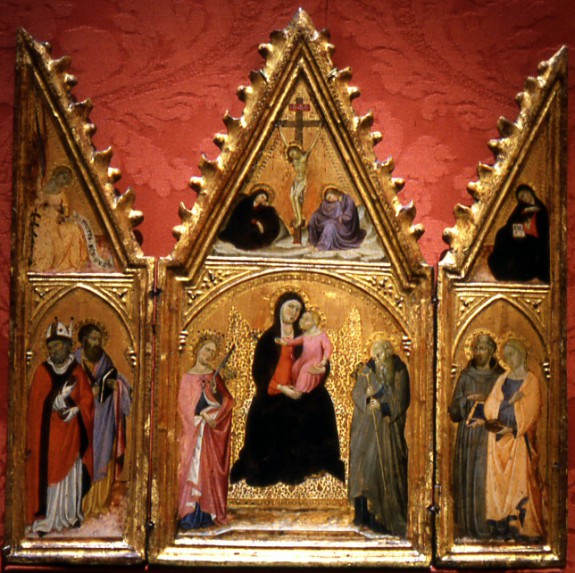
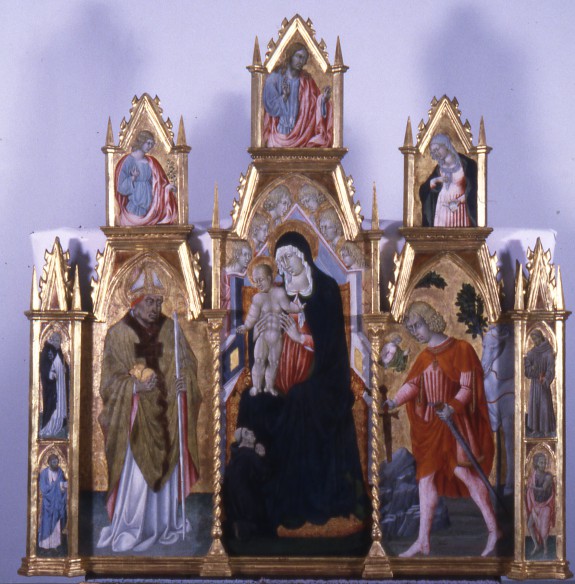
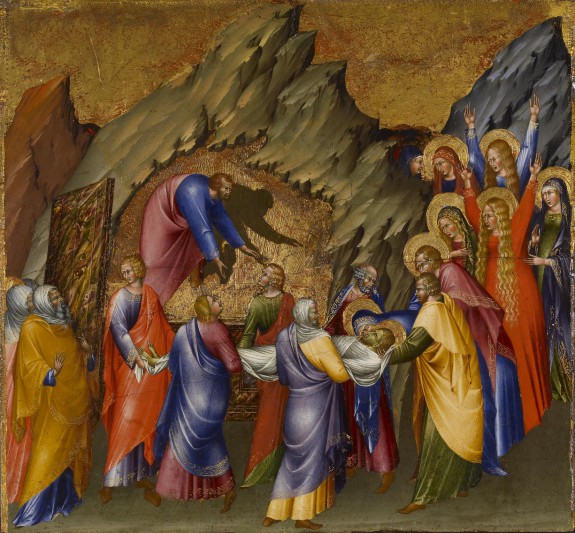
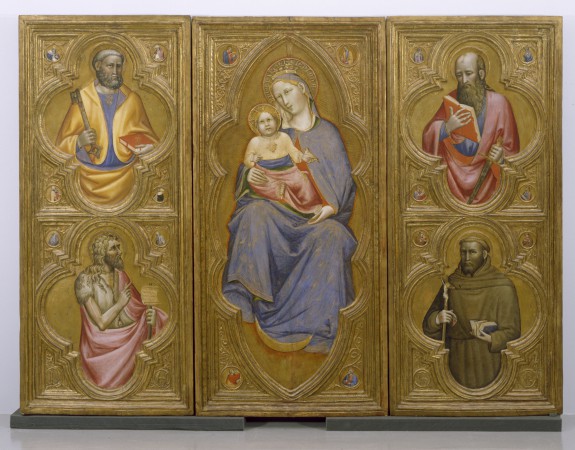
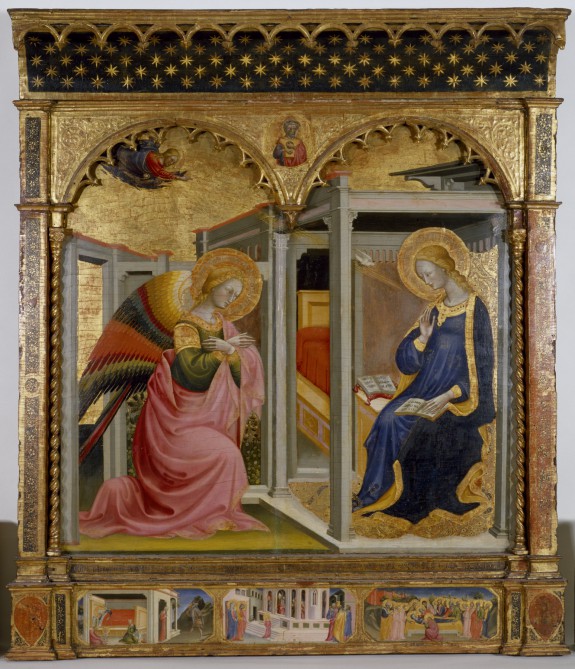
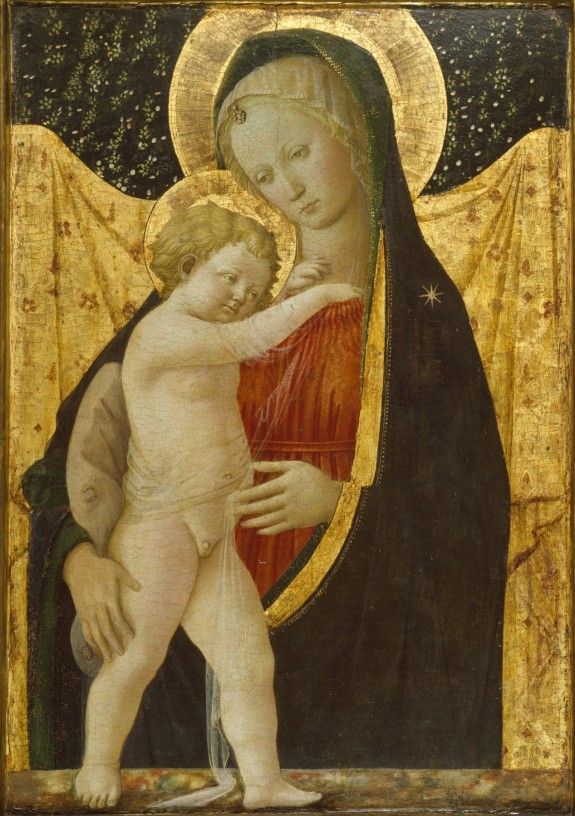

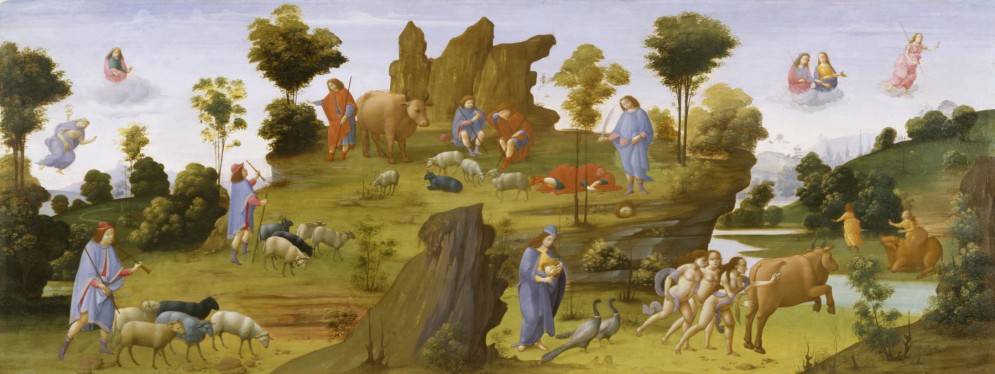


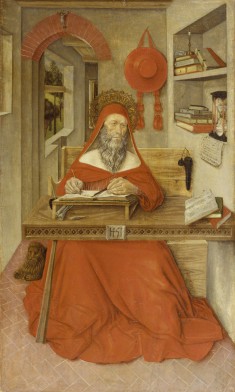
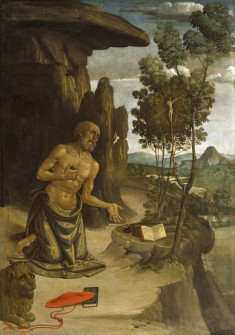


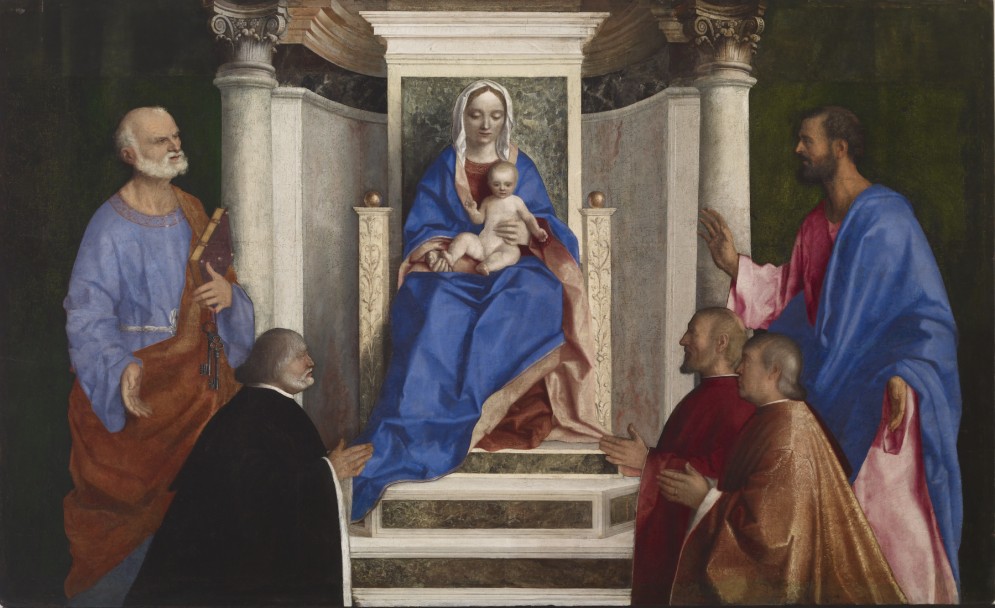

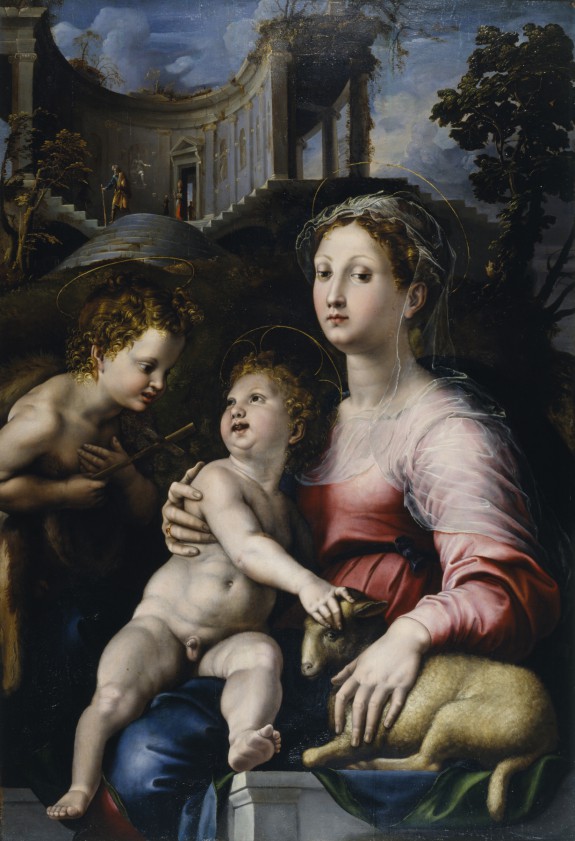

Wonderful overview of the gallery sessions of our docent training. I wish I had known about this when I went through training. Thank you Sheila, Barbara Dunn (docent class of 2016)
ReplyDelete